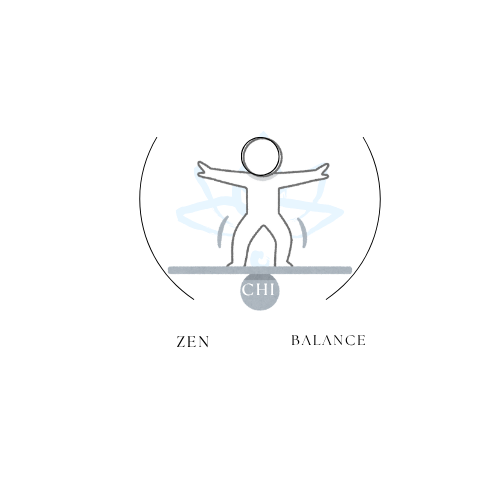
Mindset Operating System for Focus Grit and Growth
Share
Updated on: 2025-10-24
Table of Contents
- Mindset Foundations: Why Attitude and Mentality Matter
- What Is Mindset and Why Is It Important?
- How to Change Your Mindset for Success: A Gentle, Practical Path
- Common Mindset Challenges and Thoughtful Solutions
- Perfectionism vs. Progress
- Imposter Feelings and Quiet Confidence
- Negative Self-Talk and Positive Thinking
- Fixed vs. Growth Mindset: A Practical Comparison
- Mindset for Entrepreneurs: Habits That Support a Growth Mindset
- Mindset Summary and Practical Recommendations
- Mindset Q&A: Clear Answers to Common Questions
Mindset Foundations: Why Attitude and Mentality Matter
Mindset is the quiet lens that influences how you see challenges, how you use feedback, and how you move through stress. It is connected to your attitude and the deeper patterns of your mentality. When your mindset is flexible and supportive, positive thinking feels more natural and progress becomes easier to sustain. A growth mindset does not promise instant results; it simply widens what feels possible, which can be a kind and effective starting point.
If you enjoy reflective learning, you might appreciate browsing the latest ideas and gentle practices on our blog. You will find calm, practical insights you can apply at your own pace.
What Is Mindset and Why Is It Important?
Mindset is the set of beliefs and assumptions you hold about yourself and your abilities. It shapes your reactions, your choices, and your energy. It is important because it quietly directs how you interpret events: setbacks can feel like signals to stop or invitations to learn. The same situation can lead to very different results depending on your mindset, attitude, and mentality. When you choose a more open stance, you do not pretend challenges are easy—you simply decide they are workable, one small step at a time.
How to Change Your Mindset for Success: A Gentle, Practical Path
If you are wondering how to change your mindset for success, consider this simple, supportive path. Each step is small and respectful of your current capacity.
- Name the pattern: When you notice a limiting belief, write it down. Clear labels reduce confusion.
- Challenge the story: Ask, “What evidence supports this? What evidence does not?” This invites balance.
- Rewrite the script: Replace the belief with a kinder, still-accurate statement. Keep it specific and believable.
- Test with tiny actions: Choose a very small step that proves the new belief is possible. Build trust slowly.
- Reflect and adjust: Note what worked, what felt hard, and what you might try next. Gentle iteration matters.
This process helps you practice a growth mindset by turning beliefs into testable ideas. As your new patterns take root, your attitude becomes calmer and more resilient.
Common Mindset Challenges and Thoughtful Solutions
Even with the best intentions, certain challenges tend to surface. Below are common hurdles and considerate ways to handle them. Each solution is designed to support consistency without strain.
Perfectionism vs. Progress
The challenge: Perfectionism often appears as endless polishing or avoidance. It says “not ready,” even when you have done enough.
A gentle solution: Use “good enough to learn” as your guide. Set modest quality bars for early drafts, early launches, or early experiments. Try a 70% rule: when your work feels about 70% complete, ship it to gather feedback. This approach honors quality while protecting momentum and a healthier mentality.
Imposter Feelings and Quiet Confidence
The challenge: Imposter feelings can make your achievements feel like luck. They shrink your attitude and reduce your willingness to try.
A gentle solution: Keep a “credibility ledger.” Note small wins, kind feedback, and lessons learned. Review this ledger before challenging tasks. Your confidence will be rooted in facts, not bravado, which supports a steady, realistic mindset.
Negative Self-Talk and Positive Thinking
The challenge: Inner criticism can be loud and repetitive. It narrows your options and drains energy.
A gentle solution: Try the “supportive teammate” voice. Ask what a considerate colleague would say. Use short, caring phrases: “You can learn this,” “One step at a time,” “Progress counts.” Positive thinking is not about ignoring problems; it is about choosing the most helpful, accurate thought available right now.
Fixed vs. Growth Mindset: A Practical Comparison
This comparison makes it easier to notice which mindset is active in a given moment and how to pivot with care.
Fixed Mindset: Typical Patterns
- Abilities feel permanent and set.
- Feedback can feel personal or threatening.
- Setbacks often mean “stop” or “not for me.”
- Effort may feel like proof of weakness.
- Short-term wins are valued over long-term learning.
Growth Mindset: Typical Patterns
- Abilities are seen as improvable with practice.
- Feedback is information, not a verdict.
- Setbacks are signals for learning and adjustment.
- Effort is the path to mastery.
- Process and consistency matter as much as outcomes.
If you run a business or lead a team, the best mindset for entrepreneurs is usually a growth mindset paired with practical constraints. You can honor budgets and deadlines while staying open to learning. When you hold goals lightly but work steadily, your attitude supports both quality and sustainability.
Mindset for Entrepreneurs: Habits That Support a Growth Mindset
Entrepreneurship asks for courage, patience, and a steady mentality. These simple habits may help your mindset feel both grounded and flexible.
- Weekly learning sprints: Choose one skill or question and study it for a short, focused period. Protect a small, reliable slot on your calendar.
- Assumption logs: Write down assumptions about customers, offers, or priorities. Test one assumption each week with a small experiment.
- Feedback rituals: Invite a trusted peer to review your process, not just your outcomes. Ask what to keep, start, and stop.
- Energy inventory: Track what gives energy and what drains it. Aim to add one energizing task and remove one draining task each week.
- Compassionate metrics: Monitor leading indicators you control (sessions, outreach, drafts) alongside results you influence but do not control. This balance supports a resilient attitude.
If you would like to learn more about our values and approach to calm progress, you are welcome to read our About page. For questions or thoughtful feedback, our Contact page is open and appreciated.
Mindset Summary and Practical Recommendations
Mindset is not a quick fix; it is a daily practice that shapes how you interpret events and how you choose your next step. A growth mindset invites learning, steadies your attitude, and supports positive thinking without ignoring reality. As you work with your mentality, three themes can keep you grounded:
- Clarity beats intensity: Small, clear actions compound. Choose the next right step, then the next.
- Language shapes experience: Favor words that are both kind and accurate. Your brain listens to your voice.
- Systems create safety: Routines and checklists reduce strain. They make progress feel dependable.
To integrate these ideas, pick one habit from this article and try it for a week. Track how you feel before and after, and celebrate any insight you gain. If you prefer to begin with a light exploration, you can revisit our Home page and choose a resource that meets you where you are.
Mindset Q&A: Clear Answers to Common Questions
What is mindset and why is it important?
Mindset is the collection of beliefs you hold about your abilities and your potential. It matters because it guides how you interpret challenges and how you respond to feedback. With a more flexible mindset, you are more willing to try, learn, and adjust, which tends to produce steadier progress over time.
How can I develop a growth mindset?
Start small. Name one belief that limits you, challenge it with balanced evidence, and test a tiny action that supports a kinder belief. Keep a simple reflection habit so you can notice progress. Over time, these steps shape a durable growth mindset without forcing change.
What is the best mindset for entrepreneurs?
A growth mindset paired with clear constraints is often helpful. It encourages learning, supports calm problem-solving, and leaves room to respect budgets and timelines. When you anchor your mentality in learning and your attitude in steady effort, results become more consistent.
Is positive thinking the same as ignoring problems?
No. Positive thinking, as used here, means choosing the most helpful accurate thought available. You still acknowledge risks and limits; you simply frame them in a way that supports action, learning, and care.
Note: This article is for general informational purposes and is not a substitute for professional advice.

I'm a passionate curator at Zen Chi Balance, dedicated to spreading calm, harmony, and mindful living through faith-inspired lifestyle products. I help craft meaningful experiences for our global community of mindful shoppers.
The content in this blog post is intended for general information purposes only. It should not be considered as professional, medical, or legal advice. For specific guidance related to your situation, please consult a qualified professional. The store does not assume responsibility for any decisions made based on this information.
